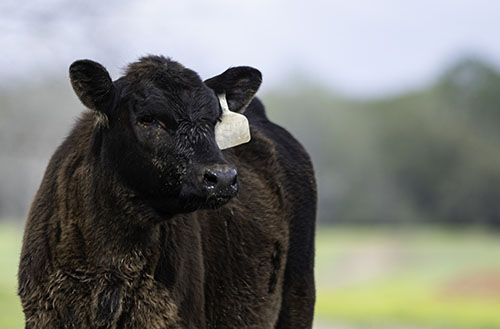Neonatal Diarrhea in Calves
Feb 17, 2023

As many farmers are amid winter calving season, neonatal diarrhea will soon become a concern for many beef producers. This condition has a myriad of different effects that can range from very mild, self-limiting diarrheas to severe, often fatal episodes. As we examine some of the causes of calf diarrhea and begin to talk about how to control this troublesome condition, it is important to note that management and care of the brood cow are as, if not more, important than that of the newborn calf. Certainly, the proper nutrition status of the cow is critical as a well-fed cow always has a better opportunity to milk well than a poorly fed cow. Cows that milk well and provide the calf with strong colostrum have calves with stronger immune systems and are much less likely to be attacked by one of these diarrhea diseases. Cleanliness and hygiene are also very important in helping control calf diarrhea. Keeping feeding areas free of manure and excessive mud will help control contamination of the cow’s udder with dirt and manure that can easily transmit the common pathogens of diarrhea to the calf.
Some of the common causes of neonatal diarrhea include E. coli, rotavirus, coronavirus, and C. perfringens type C. All of these can cause diarrhea in the first days of life up to about 1-2 months of age. The two viral diseases — Rota and coronaviruses — tend to be slightly less fatal and are somewhat self-limiting. The other two are bacteria and are much more severe, often ending in the death of the calf. Regardless of etiology, the main concern is dehydration. The calves lose fluid in diarrhea and often don’t feel well enough to nurse or drink, so they become dehydrated. Electrolyte supplementation is also extremely important since many important electrolytes are lost in the diarrhea. Antibiotics are almost always recommended since it is difficult to distinguish the cause. Even if the diarrhea is caused by a virus, antibiotics can be effective against secondary bacterial invaders.
Since treatment can be frustrating and sometimes unsuccessful, prevention may be the answer for many producers. The cow, again, is the target here. Many commercially available vaccines can be given to the cow before she calves that will enable her to make strong colostrum that will help the calf protect itself from diarrhea diseases. These vaccines come in a variety of combinations covering one or more of the earlier-mentioned diseases. It is important to note that these vaccines are labeled to be given to cows that are pregnant shortly before they calve. Depending on the vaccine, they may have to be given more than once during that interval before calving. While that may seem inconvenient, the vaccines are quite effective, and, in the face of losing several baby calves, don’t seem so bad.
If calf diarrhea is a serious problem in your herd, contact your local Co-op to get help with a vaccine protocol that could limit and hopefully eliminate your neonatal diarrhea problem.
For more content like this, check out the latest issue of The Cooperator.
Some of the common causes of neonatal diarrhea include E. coli, rotavirus, coronavirus, and C. perfringens type C. All of these can cause diarrhea in the first days of life up to about 1-2 months of age. The two viral diseases — Rota and coronaviruses — tend to be slightly less fatal and are somewhat self-limiting. The other two are bacteria and are much more severe, often ending in the death of the calf. Regardless of etiology, the main concern is dehydration. The calves lose fluid in diarrhea and often don’t feel well enough to nurse or drink, so they become dehydrated. Electrolyte supplementation is also extremely important since many important electrolytes are lost in the diarrhea. Antibiotics are almost always recommended since it is difficult to distinguish the cause. Even if the diarrhea is caused by a virus, antibiotics can be effective against secondary bacterial invaders.
Since treatment can be frustrating and sometimes unsuccessful, prevention may be the answer for many producers. The cow, again, is the target here. Many commercially available vaccines can be given to the cow before she calves that will enable her to make strong colostrum that will help the calf protect itself from diarrhea diseases. These vaccines come in a variety of combinations covering one or more of the earlier-mentioned diseases. It is important to note that these vaccines are labeled to be given to cows that are pregnant shortly before they calve. Depending on the vaccine, they may have to be given more than once during that interval before calving. While that may seem inconvenient, the vaccines are quite effective, and, in the face of losing several baby calves, don’t seem so bad.
If calf diarrhea is a serious problem in your herd, contact your local Co-op to get help with a vaccine protocol that could limit and hopefully eliminate your neonatal diarrhea problem.
For more content like this, check out the latest issue of The Cooperator.